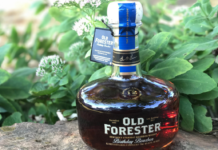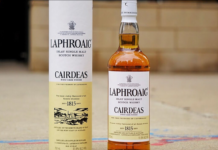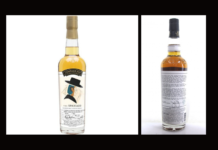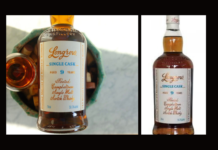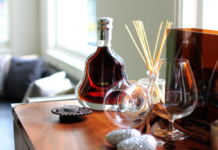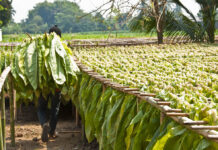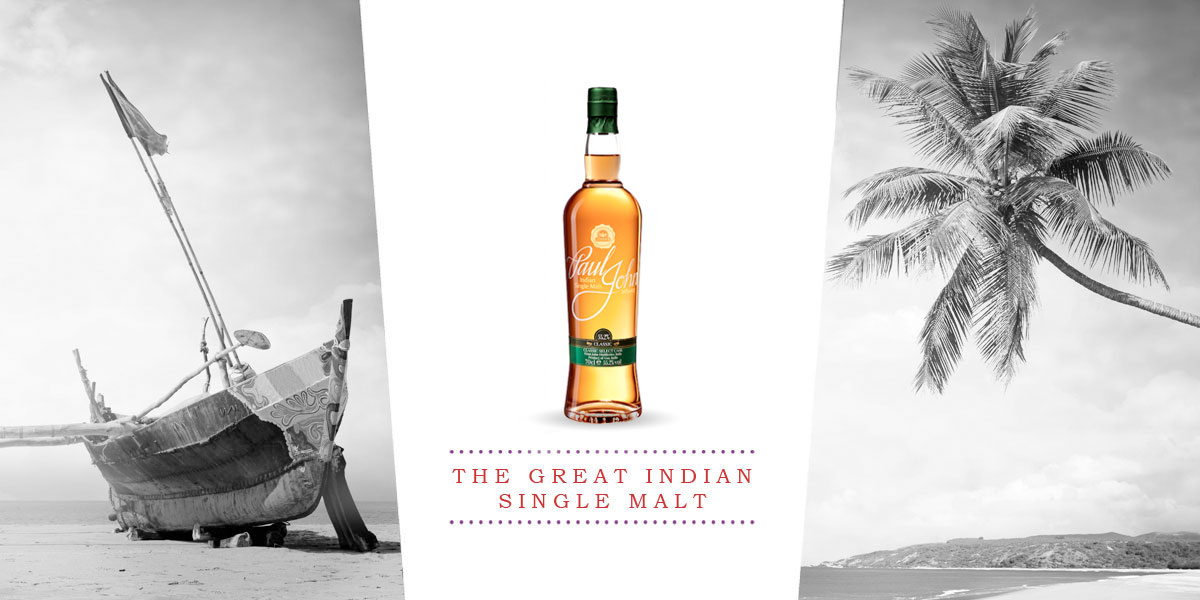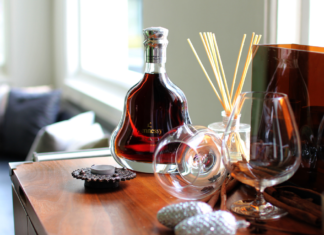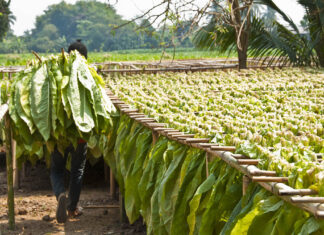My first collaborative interview for TasteTheDram.com was with Paul John Single Malts Chairman, Mr Paul P John. Not only did Paul John make time for us in his busy schedule, but he also helped us set a conference call from Goa, India to my place in Brooklyn, New York. With the time difference, his after work hours put us at a 9:00 a.m. Saturday morning appointment. What a way to start the morning! Once we got through all the technological hiccups, we were live with Paul John. Gene and I got the details on this exciting new single malt and it’s beautiful story.
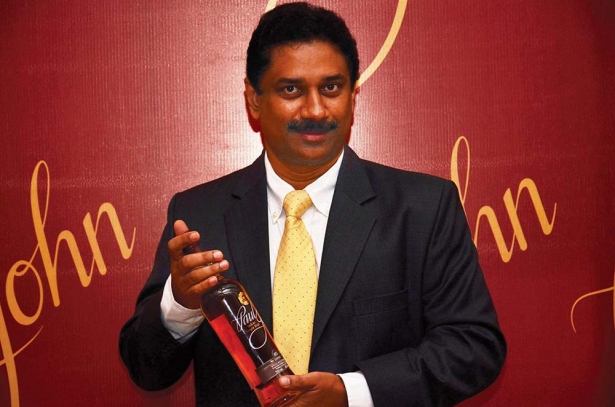 G: What were you involved in before getting into whisky distillation?
G: What were you involved in before getting into whisky distillation?
PJ: After college, I started a biscuit factory. Two years after, it ran down, and I literally had to close it. …I managed to get a license in 1992 in Distillation and to start a distillery. The reason I got into that was that during that time, my father was in trading of alcohol. He had retail shops and wholesale shops that could give us marketing; he was a distributor of some of the established brands in this country… He was in the trade of alcohol, so I decided to start manufacturing alcohol… I started off making alcohol for the lower end segment, that is, whisky where we just buy spirits or alcohol, and then blend whisky– it was a blending/bottling unit that I started… I was buying spirits from outside distillers, blending it over here, and then making a few brands of my own…
In 1996, I restructured the company from a partnership form into a private (limited) called it John Distilleries, and then I launched the brand called Original Choice whisky… the brand did extremely well, and that is the brand that is our main source of income. We are the 8th largest brand in the world, in terms of volume; we sold about 12 million cases last year… The brand Original Choice is mainly for the Indian market. It’s a domestic product, and we cater to the states of India… Subsequently, seven or eight years after that, into production, I started thinking about making wine… we started making wine again for the domestic market… we were buying the grapes from India, and then making the wine, and selling it under the brand name Big Banyan Wines… By that time, I had moved to the (United) States, I was based out of the top of Florida, and I got initiated into drinking single malts over there, and that’s when I thought, ‘Why not?’
G: Was that the first time you had single malt?
PJ: Yeah, I mean I lived in the US for about eight years, so during that period, I got introduced to the different types of single malts, and I started thinking about making it in 2002. By 2005, I started to seriously bring my dream to fruition, and by 2008 we completed the pot still distillation facilities in Goa.
G: Who else involved in this venture with you?
PJ: It was started by me, by myself, and then about 6 years ago, I took in a private equity firm, that has ventured with me. So today, I have a private equity fund that is invested in the company.
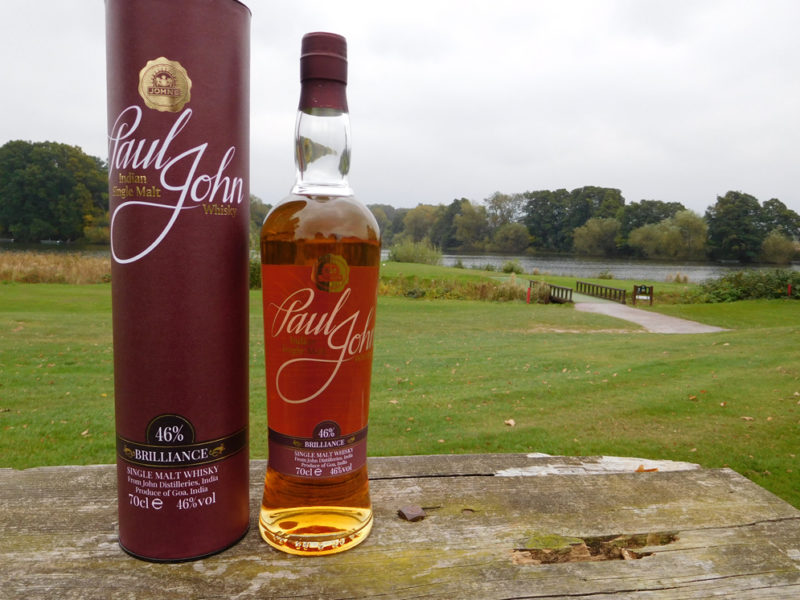 G: What are your duties now at Paul John whisky?
G: What are your duties now at Paul John whisky?
PJ: I still hold the senior-most post in the organization; I am the Chairman and Managing Director; so all the day-to-day decisions, from transporting, packaging, quality control… I have about seven or eight Heads of Departments that report to me directly… I’m very hands-on.
G: What were some of the main challenges of setting up a distillery?
PJ: I was charting into unknown territory, so everything was completely unknown. I had never done it, so there was a lot of research I needed to do. I needed to convince myself that India had the raw materials and the capability to make it. I made a lot of trips to Scotland to investigate from 92-95 before I started construction of the pot-still distillery in Goa. That was my biggest challenge – not having enough knowledge about making single malts.
B: What whisky expressions do you currently produce?
PJ: Currently we are producing about seven or eight varieties. It starts off with the 46% (ABV), non-chill filtered called the “Brilliance”, then “Edited”, and “Bold”. “Brilliance” is a completely non-peated whisky. “Edited” is with a little bit or hint of peat, and the third is called “Bold”, which is a peated whisky. Now here, everything is completely made in India, except in the case of peat; we are importing peat from Scotland, and peating the Indian barley with the Scottish peat. Right now we haven’t discovered peat in India, so for now I depend on Scotland for the peat.
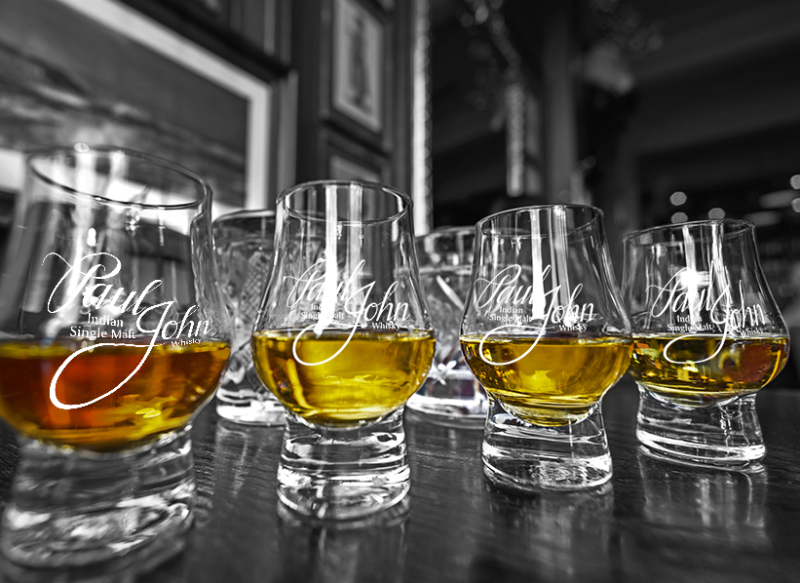 B: Have you thought of using any other materials to get the “smoke”, like some distilleries are using different types of wood to “smoke” (their whisky) instead or are you insisting on going with the peat?
B: Have you thought of using any other materials to get the “smoke”, like some distilleries are using different types of wood to “smoke” (their whisky) instead or are you insisting on going with the peat?
PJ: No, as of now, and since it is all uncharted territory, I would like to follow the already known first, until we get established. As I said those were the first three expressions at the 46%, then I have two at a little higher strength called the “Classic” and the “Peated,” which is 55 and 57.5% (ABV). This is more for the people that like more of a cask strength. And then, followed by, we do release occasionally, the Select Casks and then we have some Special releases. Like the one called “Oloroso”, where we have matured some of this single malt in oloroso butts, and then it’s got an oloroso finish. We basically lost about 200-250 bottles of the first batch, and we distributed the rest all over the world. We don’t have any more of that (expression.)
B: Have you ever considered selling single casks to companies that do independent bottlings? Or do you already do that?
PJ: Yes, we do! We have had some programs, for example, in the UK, we have had the Boutique-y Whisky Company pick up a cask once; Cadenhead’s has picked up some casks from us. Master of Malts have picked up some casks too… so yes, we have had six or seven casks sent out to different parts of the word depending on the requirement.
G: Goa is known for it’s hot temperatures. Can you tell us about the weather conditions? Do they help or hurt the maturation of the whisky?
PJ: Unfortunately, since it’s very hot and humid here, most of the year, there is a lot of activity going on in the casks. …it’s maturing at three or four times at the speed at which it matures in Scotland. The classic example is the color and the depth of character that you get in a six year or seven year cask from us, is very easily able to compete with a 31 year from Scotland. Definitely, that’s the plus side of it, but on the negative side, we have a huge evaporation loss. Unlike in Scotland, which is about less than 2%, we lose somewhere between 6% to 8% to evaporation.
G: Wow! Are you looking to do something to get the evaporation down to 2% or 3%?
PJ: We are looking into those things, but honestly, I don’t think it will make much of a difference. If we do it, we might be suppressing some of the other elements and quality as a result of it. It looks like it will be a challenge if we try to something about it.
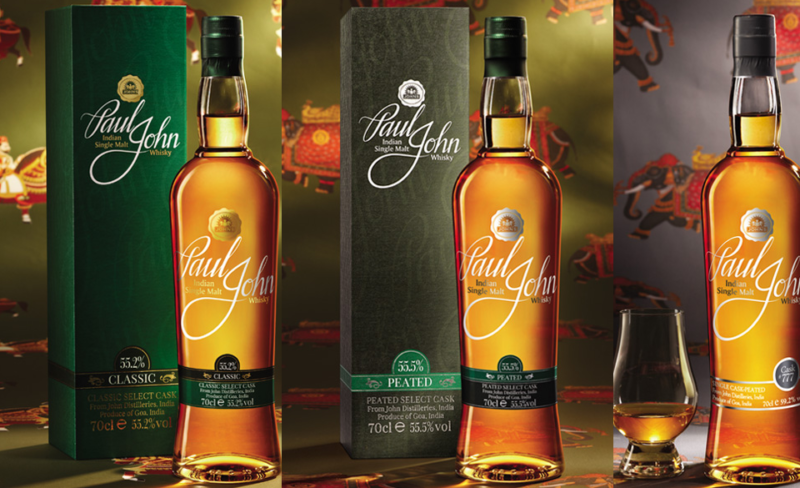 G: Do you source all of your ingredients locally? Do you support local farmers? Is it important to support the local farmers?
G: Do you source all of your ingredients locally? Do you support local farmers? Is it important to support the local farmers?
PJ: Yes, our intention is to see that it’s made as much from India as possible, and you know we grow a good quantity and good quality of barley in India… Something different we have is that the Indian barley grown (for our whisky) is the six-row barley, whereas in Scotland they use a two-row barley. There’s a huge difference them. One of the major reasons to why we have such a bold character, is there a lot more proteins in it, and tannins, and as a result, there is a lot of fatty acids that add to the character. We have decided, as of now, all our expressions are non-chill filtered, so we leave in all the fatty acids and tannins, which is what gives it all the character that we have in the product.
G: I was able to try the “Oloroso” sherry cask, and it was a really amazing, AMAZING, sherry cask. You said you have about 200-250 bottles that currently being distributed worldwide. Are you looking to increase those numbers or is there something that’s preventing you from increasing those numbers to something more widely available?
PJ: It’s been a huge success, in oddly, a few days! Whatever we had produced has been sold out. And I think the US had the last shipment that we sent it to; the rest of the world has the normal line available. We are working on making more of this; this was just an experiment that we did that is in its initial stages. Since the results have come out very encouraging, we have in fact already imported a lot of PX and oloroso casks, so hopefully in the coming years, we will be able to release more of these expressions.
G: We’re looking forward to that; it’s one of our favorite casks!
B: Since you said you were in the wine business earlier, are there any particular types of wines, that may be exclusive to India, that you would consider using to “cask finish” some of your whisky?
PJ: No, as of not we have not wanted to do that because wine is very tricky. There are many different chemicals that can be in the casks… so we have to be extremely careful before we do that. But, probably going down the road, we will be looking at those expressions, just at a later date.
 G: What do you think makes whisky, produced at your distillery, unique? There is a lot of competition in this market– what are you doing to stand out?
G: What do you think makes whisky, produced at your distillery, unique? There is a lot of competition in this market– what are you doing to stand out?
PJ: From the selecting of the casks, to the cut of the heads & tails during the distillation process– it’s all done manually. I have the mindset that quality comes first. My ambition is to make the world’s best single malt, so I’m leaving no stone unturned to see that I follow all the possible procedures to be able to get the best quality. We don’t chill filter, we use the six row barley; these are all the areas we are focusing on to see that we maintain the highest standards in making single malt. It’s more of a passion. As I mentioned earlier, all the other brands I have give me the all flexibility to be able to try out and experiment in this. I do understand that economics is a part, but right now, that comes from my other brands for now, and my intention is to create something of world class. I focus more on quality than anything else, expressly in the single malt.
B: People have a lot of opinions on where the whisky market will go in the future, or even the next year or two. What is your opinion on how you think the whisky market will go for you and for the whisky market in general?
PJ: I think there is a lot of interest in new world whisky and single malts, and it’s very clear that the new world whisky have been able to stand out, worldwide. Take for example, Taiwan, Japan, and India: they really exhibited that high quality single malts can be made (there). And there seems to be great amount of interest among the people to look at these.
All of these countries, including India, is really impressed with single malt. It’s just a matter of time before the world single malt market will explode.
G: There is another Indian whisky I came across, Amrut. It’s very difficult to compete against Scottish whisky and Irish whisky, and I know you’re doing a lot of things to stand out, but can you tell us about how your whisky is different from Amrut?
PJ: You know, I encourage more brands coming out from this country because that helps the country to be propelled as per quality single malt producers, and I’m glad with what Armut has done to propel the nation into being noticed as a serious single malt producer. Having said that, they are producing good quality single malt, and I hope they continue to produce those kinds of quality malts that help us to propel the country into the world stage of single malt producers.
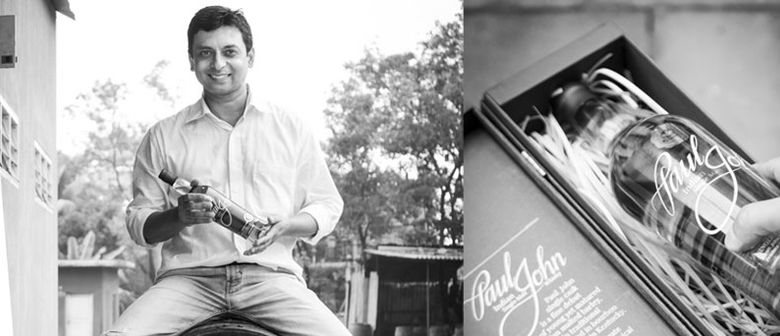 G: When I spoke with your brand ambassador AJ, he told me something about, not only the barley, but the water you get; from the northern part of India, in the mountain region. Can you tell us about that/your water source?
G: When I spoke with your brand ambassador AJ, he told me something about, not only the barley, but the water you get; from the northern part of India, in the mountain region. Can you tell us about that/your water source?
PJ: The water source is 100% from Goa. We’ve got a fantastic water table. We have a lot of rivers that pass through Goa, and they are all extremely very good quality. As I mentioned earlier, before I actually started production, I did taste the water in Scotland, and, in fact, I even brought some back some water from there. I had it tested over here and analyzed by labs, and then we did some testing of the water from Goa. …I was convinced that we had all the ingredients to make good quality single malts. So the water is from Goa, it’s the barley from north India.
G: What is your philosophy when creating spirits?
PJ: I believe in maintaining quality when trying to produce the best. There are no shortcuts to life. We give our all into making the best, the rest will follow, and the rest will become history.
B: What advice would you give to others, who may be interested in getting into the market or even to the distilling industry?
PJ: Definitely, you need to have the passion for it. This is something you really can’t think of in terms of an investment, where you’ll put in money, and in three or four years, you get a return– that’s not how this will work. …If you have the passion, then I think definitely you can get into it, focus on quality, and as I mentioned earlier, I’m sure things will open up. There seems to be a great opportunity for single malts in the world.
In conclusion, Paul John invited to stop by the distillery if we ever find ourselves in Goa. (Stay tuned, there is a chance one of us will be in the area next year!) Anyone who would ever sit down with Paul John and talk whisky with him would easily see that he is honestly out to make the world’s greatest single malt. His “no shortcuts to life” approach is evident in his work, his story, and his products.





